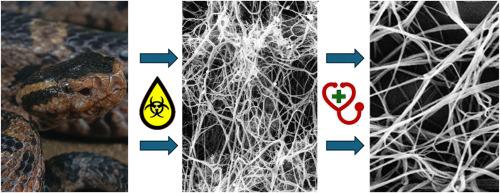中国大陆首次记录的卵蝰(山pitvipers)中毒病例:云南省两例患者出现严重凝血功能障碍和抗蛇毒血清反应变化。
IF 2.4
4区 医学
Q2 PHARMACOLOGY & PHARMACY
引用次数: 0
摘要
Ovophis spp.(山地pitvipers)的中毒在临床上具有重要意义,但报告不足,特别是在没有确诊病例记录的中国大陆。在这里,我们报告两例来自云南省的卵圆虫,导致严重的凝血功能障碍,其特征是低纤维蛋白原血症和d -二聚体和FDP水平升高。在病例1中,一名51岁妇女被确诊的makazayazaya O.咬伤后出现中度低纤维蛋白原血症,并在联合使用尖吻蝮蛇和短尾Gloydius单价抗蛇毒血清后消退。在病例2中,一名37岁的妇女被一种无法识别的卵卵蛇咬伤,尽管使用了四瓶短尾蛇抗蛇毒血清治疗,但纤维蛋白原完全耗尽,凝血功能延长。这些病例突出了卵蛾毒液的强凝血毒性作用。两例的临床差异表明,毒液的变异和不同的抗蛇毒血清疗效可能会影响结果。我们的研究结果强调了进一步研究卵形蛇毒成分、可用抗蛇毒血清交叉中和以及在临床环境中改进物种水平鉴定的必要性。本文章由计算机程序翻译,如有差异,请以英文原文为准。

First documented cases of envenomations in mainland China by Ovophis species (mountain pitvipers): Severe coagulopathy and variable antivenom response in two patients from Yunnan Province
Envenomations by Ovophis spp. (mountain pitvipers) are clinically significant yet underreported, especially in mainland China where no confirmed cases have been documented. Here we report two cases of Ovophis envenoming from Yunnan Province that resulted in severe coagulopathy marked by hypofibrinogenemia and elevated D-dimer and FDP levels. In Case 1, a 51-year-old woman bitten by a confirmed O. makazayazaya developed moderate hypofibrinogenemia, which resolved following combined treatment with Deinagkistrodon acutus and Gloydius brevicaudus monovalent antivenoms. In Case 2, a 37-year-old woman bitten by an unidentifiable Ovophis species experienced complete depletion of fibrinogen and prolonged coagulopathy despite treatment with four vials of G. brevicaudus antivenom. These cases highlight the potent coagulotoxic effects of Ovophis venom. Clinical differences between two cases suggest that venom variation and differential antivenom efficacy may influence outcomes. Our findings underscore the need for further research into Ovophis venom composition, cross-neutralization by available antivenoms, and improved species-level identification in clinical settings.
求助全文
通过发布文献求助,成功后即可免费获取论文全文。
去求助
来源期刊

Toxicon
医学-毒理学
CiteScore
4.80
自引率
10.70%
发文量
358
审稿时长
68 days
期刊介绍:
Toxicon has an open access mirror Toxicon: X, sharing the same aims and scope, editorial team, submission system and rigorous peer review. An introductory offer Toxicon: X - full waiver of the Open Access fee.
Toxicon''s "aims and scope" are to publish:
-articles containing the results of original research on problems related to toxins derived from animals, plants and microorganisms
-papers on novel findings related to the chemical, pharmacological, toxicological, and immunological properties of natural toxins
-molecular biological studies of toxins and other genes from poisonous and venomous organisms that advance understanding of the role or function of toxins
-clinical observations on poisoning and envenoming where a new therapeutic principle has been proposed or a decidedly superior clinical result has been obtained.
-material on the use of toxins as tools in studying biological processes and material on subjects related to venom and antivenom problems.
-articles on the translational application of toxins, for example as drugs and insecticides
-epidemiological studies on envenoming or poisoning, so long as they highlight a previously unrecognised medical problem or provide insight into the prevention or medical treatment of envenoming or poisoning. Retrospective surveys of hospital records, especially those lacking species identification, will not be considered for publication. Properly designed prospective community-based surveys are strongly encouraged.
-articles describing well-known activities of venoms, such as antibacterial, anticancer, and analgesic activities of arachnid venoms, without any attempt to define the mechanism of action or purify the active component, will not be considered for publication in Toxicon.
-review articles on problems related to toxinology.
To encourage the exchange of ideas, sections of the journal may be devoted to Short Communications, Letters to the Editor and activities of the affiliated societies.
 求助内容:
求助内容: 应助结果提醒方式:
应助结果提醒方式:


